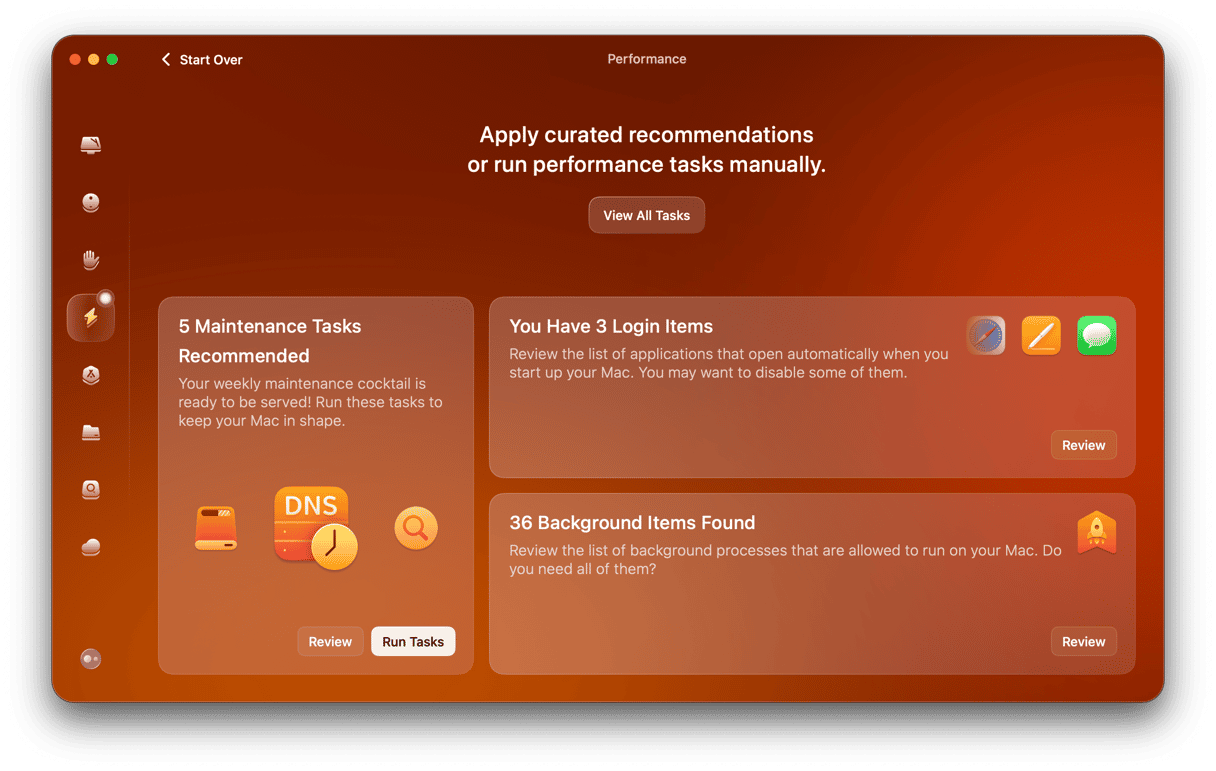We all know that when you want to start up your Mac, you just press the power button, and when you want to restart, you go to the Apple menu and choose Restart from there. But did you know there are several other Mac boot commands? These useful combinations help start up the Mac properly and fix system errors. We’ll explain more below.
Why are there different Mac boot options?
The simple answer is to allow you to troubleshoot problems. If your Mac won’t start up in regular boot mode or if it starts up but behaves erratically, you need to be able to diagnose the problem and fix it.
Different boot modes allow you to, for example, start your Mac with only the bare minimum of extensions loaded, so you can figure out if they are at the root of the problem. Or you can boot into recovery mode and run Disk Utility to repair your disk or, at worst, reinstall macOS.
What are the available Mac boot keys and options?
Here is a list of the different Mac startup keys and boot commands:
- macOS Recovery
- Startup Manager
- Reset NVRAM
- Safe mode
- Apple Diagnostics
- Single-user sode
- Target disk mode
Keep on reading to learn how to access Mac boot modes and what they do.
macOS Recovery
macOS Recovery is used to install and reinstall macOS operating system.
For an Intel-based Mac
- Restart your Mac.
- Next, press either of the following combinations:
- Hold down Command-R while starting your Mac to access the built-in recovery tools, including Disk Utility. This option allows you to reinstall the latest version of macOS that was installed on your Mac.
- To install the latest version of macOS that is compatible with your Mac, hold down Option-Command-R instead.
- If you want to reinstall the version of macOS that came with your Mac or the nearest one that’s still available, hold down Shift-Option-Command-R.
You may need to enter your password if you see a lock, choose a volume you want to recover, or enter your admin account. Basically, just follow the on-screen instructions after using the combination you need.
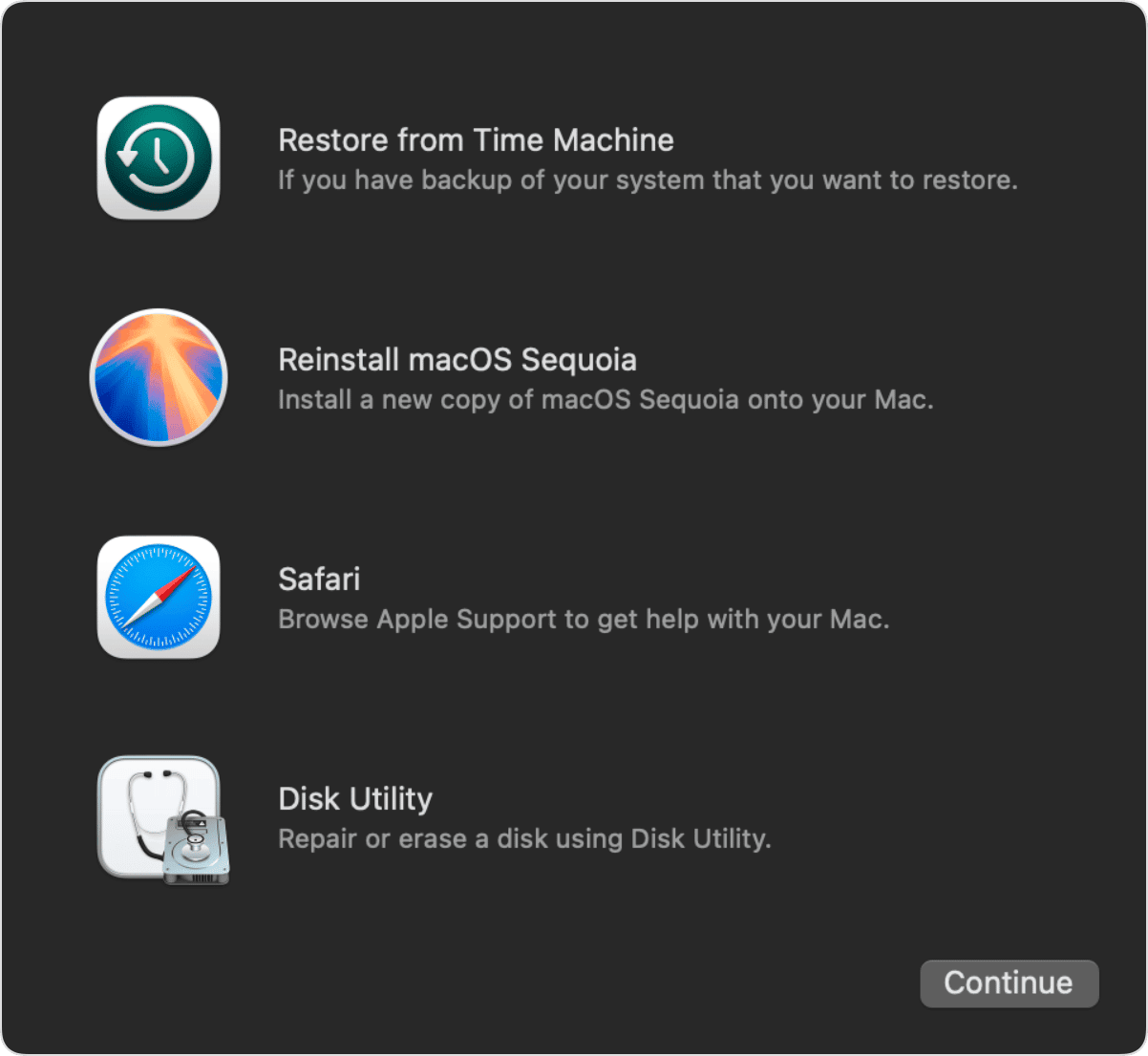
For a Mac with Apple silicon
- Go to Apple menu > Shut Down.
- Press and hold the power button, and do not release it until the “Loading startup options” message appears.
- Click Options > Continue.
- You may need to enter your password, choose a volume, or enter the admin account.
Startup Manager
The Startup Manager allows you to choose which bootable volume to start up from if you have more than one connected to your Mac. You can also use this method to startup up from a Time Machine backup if it’s connected to your Mac.
For an Intel-based Mac
- Hold down the Option (Alt) key while you start up your Mac.
- Choose the volume you want to boot from by clicking on it when the options appear on the screen.
- Press Return.
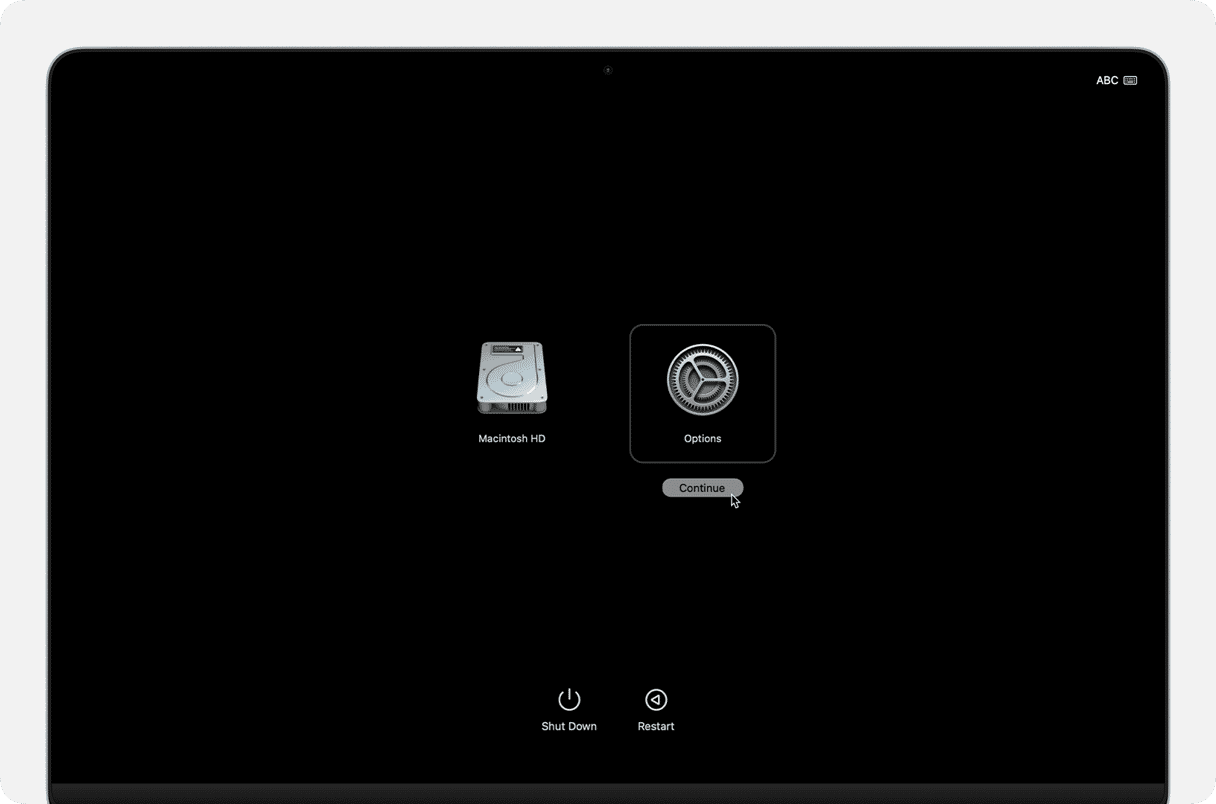
For a Mac with Apple silicon
- Go to Apple menu > Shut Down.
- Press and hold the power button, and do not release it until the “Loading startup options” message appears.
Reset NVRAM
If your Mac is having problems with sound volume, display resolution, or time zones, resetting the NVRAM can help.
For an Intel-based Mac
- Shut down your Mac, then press the power button while holding Command-Option-P-R.
- Wait 20 seconds and release the keys, or if your Mac plays a startup chime, release the keys after the second chime. If your Mac has a T2 security chip, you can release the keys after the Apple logo appears and disappears on the screen for the second time.

For a Mac with Apple silicon
No applicable combinations exist because NVRAM reset is not needed on these Mac computers.
For more information, here is a video about SMC, PRAM & NVRAM reset.
Safe mode
Safe mode is a diagnostics tool that allows you to determine whether problems you’re having on your Mac are being caused by software that loads when it starts up.
When you start up in safe mode, login items, system extensions not needed by the OS, and third-party fonts are not loaded. System caches are deleted, and the macOS runs a check of your startup disk.
For an Intel-based Mac
- Start or restart your Mac while holding the Shift key.
- Release Shift when you see the login window.
- You may have to log in twice and should see “Safe Boot” in the top right corner of the login window.
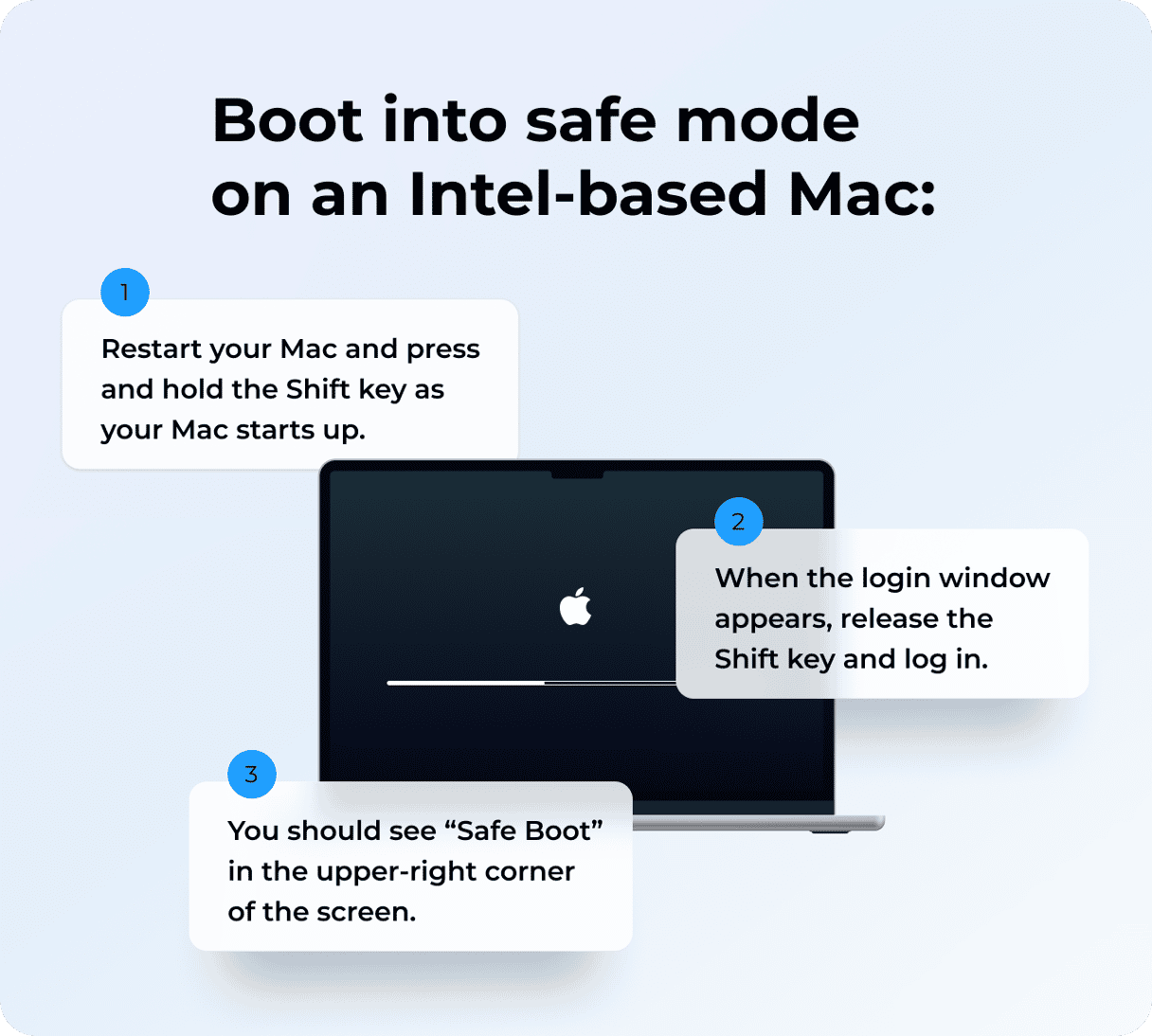
For a Mac with Apple silicon
- Shut down your Mac and wait 10 seconds.
- Press and hold the power button until the startup options window shows up.
- Select a startup disk.
- Press the Shift key and click Continue in Safe Mode.
- Release the Shift key and log into your Mac.
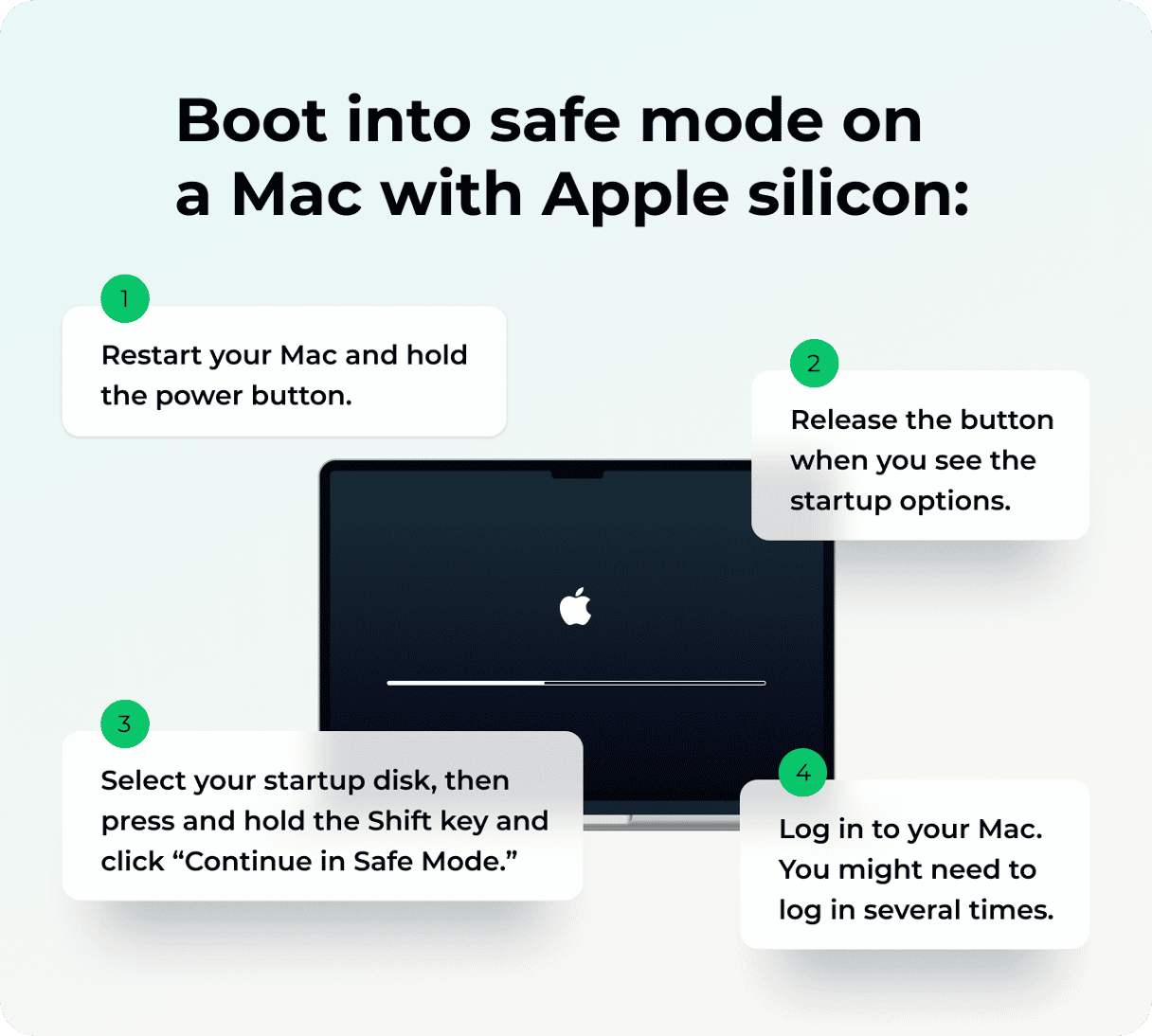
Apple Diagnostics
When you’ve ruled out all possible software errors and come to the conclusion that you have a hardware fault, Apple Diagnostics can help determine which piece of hardware is causing the problem.
For an Intel-based Mac
- Disconnect all external devices except the mouse, keyboard, display, power cable, and Ethernet cable if you use one.
- Shut down your Mac.
- Turn on your Mac and then press and hold the D key. Keep holding it until you see a window on the screen asking you to choose a language.
- Apple Diagnostics will now check your Mac for problems.
- When it’s finished, it will report what it has found and give you options for what to do next.

For a Mac with Apple silicon
- When turning on your Mac, press and hold the power button.
- When you see the startup options window, release the power button.
- Press Command-D.
Single-user mode
Single-user mode allows you to troubleshoot the startup process on your Mac. However, it boots your Mac into a command-line interface, so you should only use it if you know how to work with the command line.
For an Intel-based Mac
- Start up or restart your Mac.
- Press Command-S on Mac startup.
- The screen will turn black and display white text. You can now run UNIX commands.
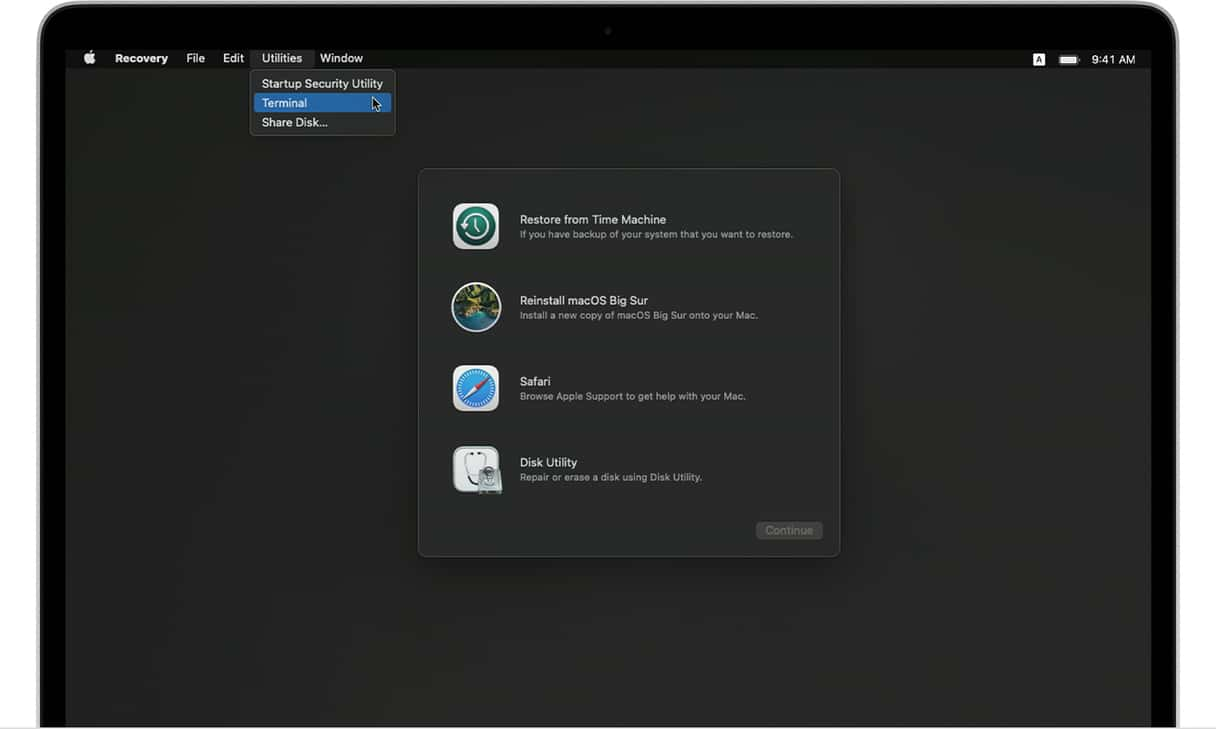
For a Mac with Apple silicon
- Shut down your Mac.
- Press and hold the power button.
- Wait until you see the Apple logo or a spinning globe.
- Release the power button.
- Choose Utilities > Terminal.
Target disk mode
If you want to make your Mac appear as an external volume on another Mac, you can use target disk mode. You can connect the Macs using one of the following cables:
- Thunderbolt 3
- USB-C
- Thunderbolt 2
- FireWire
It is the first step. Next, follow the instructions for the Mac you own.
For an Intel-based Mac
- If your Mac has not been started up, press the power button and hold down the T key. When it’s finished booting, you’ll see a Thunderbolt, FireWire, or USB symbol on the screen.
- If it is already started up, go to System Preferences > Startup Disk and choose the boot disk, then click Target Disk Mode. When asked to confirm, press Restart.
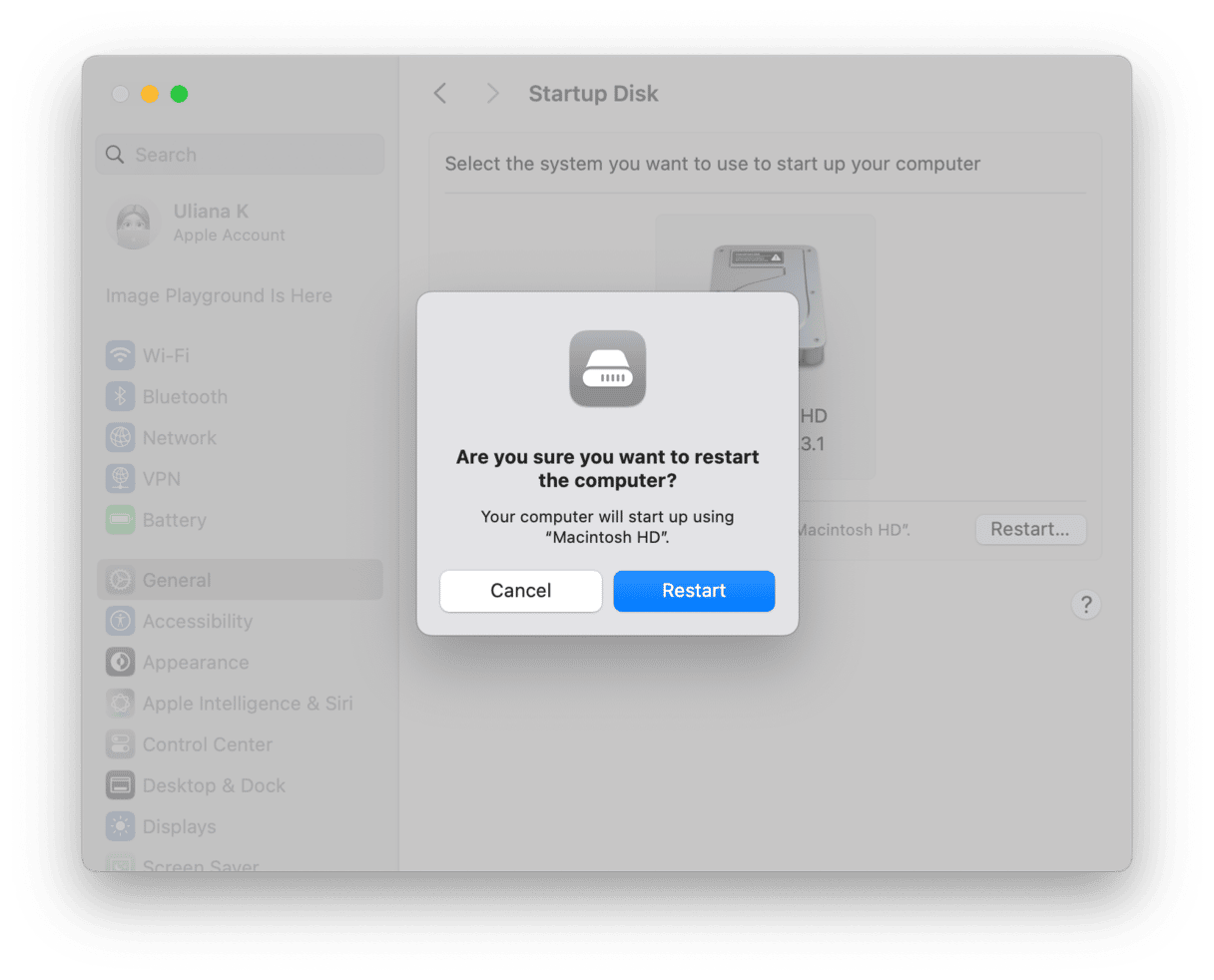
For a Mac with Apple silicon
- Go to Apple Menu > Shut Down.
- Press and hold the power button, and do not release it until the “Loading startup options” message appears.
- Click Options > Continue.
- Enter the admin account if requested.
- Click Utilities > Share Disk.
- Select the disk you would like to share > Start Sharing.
Once the Mac has booted into target disk mode, you can connect it to another Mac. On the other Mac, go to Finder > Network and find the Mac with the shared disk or volume. Double-click it > Connect As Guest > Connect. You can now transfer files.
There are several different Mac boot options you can access by holding down different combinations of keys. Each has a different function to help you fix problems with your Mac. Follow the instructions above to use the different modes. If you’re looking for a quick fix, download CleanMyMac to help you resolve issues with your Mac.



